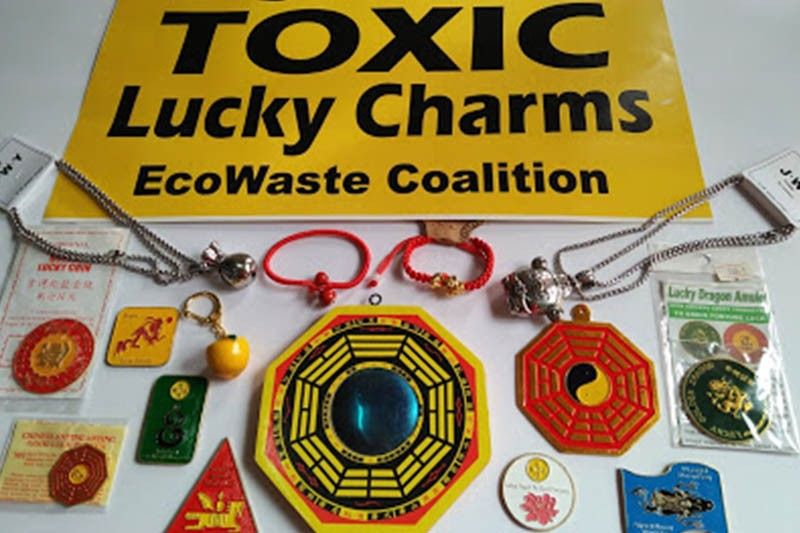Environmental group warns of toxic chemicals in lucky charms

MANILA, Philippines — Some luck activators and enhancers may not bring luck at all after they were found to have traces of hazardous cadmium and lead, an environmental group said Monday.
EcoWaste Coalition issued the warning ahead of the celebration of the Chinese New Year Tuesday.
“Some lucky charms and amulets that are supposed to attract energy, health, fortune and happiness are unluckily contaminated with cadmium and lead, two highly hazardous substances that belong to the WHO’s list of 10 chemicals of major public health concern,” Thony Dizon, chemical safety campaigner of EcoWaste Coalition, said.
Out of the 20 lucky charms and amulets purchased by the group over the weekend, 15 items were found to be laced with dangerous levels of lead and cadmium. The levels were way above the 90 parts per million limit for lead in paint under the Philippine and United States law, and 100 ppm limit for cadmium in jewelry under the European Union regulation.
Among the worst samples found by the group were a stainless steel necklace with a pig pendant that has 293,000 ppm of cadmium and a red fabric bracelet with pig adornment that has 238,800 ppm of cadmium.
Also among those heavily laden with lead were a holy gourd (57,300 ppm), peach trinket (56,300 ppm), dragon (52,500 ppm), lotus flower (22,000 ppm), windhorse (20,300 ppm) and three-legged frog (19,500 ppm).
“Cadmium and lead, which can accumulate in the body and damage human health, should not be present in our consumer products, especially for items that are supposed to enhance good health and better life,” Dizon said.
Lead, as classified by the World Health Organization, “is a cumulative toxicant that affects multiple body systems, including the neurologic, hematologic, gastrointestinal, cardiovascular and renal systems.”
Cadmium, on the other hand, is “carcinogenic to humans” and is also recognized as a reproductive and developmental toxin, according to the International Agency for Research on Cancer.
- Latest
- Trending





























